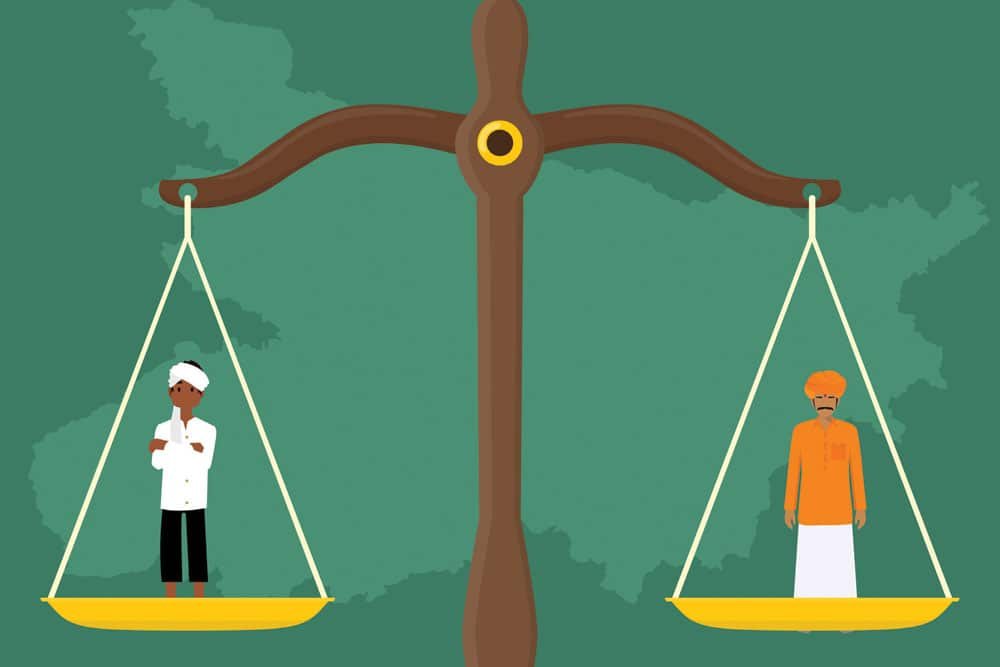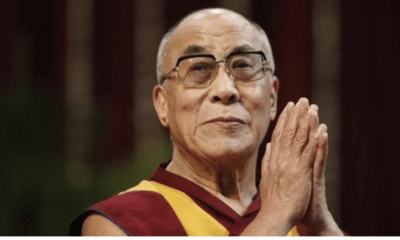
|
Getting your Trinity Audio player ready...
|
(The article was originally published by OPEN Magazine on April 16, 2023 . Views expressed are personal.)
BR Ambedkar insisted that wherever Indians go, caste follows. It may not be completely untrue. Over centuries, caste has got deeply entrenched in the Indian psyche. It is also true that some sort of a caste identity pervades South Asia, irrespective of religious affiliations.
Caste is a hyper-sensitive issue in South Asia. Gandhi and Ambedkar disagreed fundamentally on the caste question. Gandhi believed that caste was a rational organisational arrangement of the Hindu society. He shifted his position after 1922 to talk about varna as a rational arrangement instead of caste and earnestly believed that the caste identities would subsume into the four varnas, which were essentially vocational guilds.
In Ambedkar’s view, caste was the single-most abominable institution in Hinduism, which he described in his book Annihilation of Caste as a “monster” that “crosses your path” wherever you turn. He even called it “treason” to adhere to caste identities. It was on that question that he refused to call Gandhi the “Mahatma” as late as 1955, and finally left Hinduism for Buddhism a year later.
From then to today, Gandhi’s and Ambedkar’s India has undergone a significant transformation. As education and prosperity reached greater sections of Indian society, the outlook on caste, too, underwent some reform.
Ambedkar opined that even if some Hindus wish to break their caste identity, their religion will come in the way. That is no longer a reality.
Hindu religious leadership took the historic step in 1969 at Udupi in Karnataka of declaring that untouchability has no place in the Hindu religion. Further, they also rejected the notion of hierarchical caste by proclaiming “Hindavah Sodaraah Sarve”—all Hindus are brothers and sisters. R Bharnayya, a Dalit leader, who was a retired IAS officer and a member of the Karnataka State Public Service Commission, presided over that historic conference.
Inter-caste marriages and intermingling of all castes are wholeheartedly supported by the Hindu religious leadership today.
Many Hindu leaders sincerely believe that caste as an institution has outlived its utility. “Concepts of ‘varna’ & ‘jaati’ (caste) should be forgotten… today, if someone asks about it, everyone thinking in the interest of society should tell that ‘varna’ and ‘jaati’ (caste) system is a thing of the past and should be forgotten,” the Rashtriya Swayamsevak Sangh (RSS) Chief Mohan Bhagwat declared recently at a programme in Maharashtra.
Not that the scourge of casteism has disappeared completely. It continues in India in various forms, the biggest oxygen being provided by the politics of the country. But there is also a growing consciousness about its evils, both among the religious and social leadership, as well as the ordinary citizens. Inter-caste marriages, recommended as a remedy to do away with the evil of casteism by Ambedkar, are no longer uncommon or anathema.
It is in this context that the raging debate over caste in Western societies like the US needs to be understood. On the one hand, sincere efforts are taking place at eradicating the hierarchical concept of caste and associated casteism in India. But on the other hand, some vested interests are making renewed attempts at mainstreaming caste in the US, and elsewhere in the West.
In the last few years, a concerted effort took place to portray the expat Hindu community as a wretched den of extreme caste discrimination. Mythical insinuations that sound hyperbolic and exaggerated, like “upper castes pat on the back only to check if you are wearing a janeu [cross-thread worn by some castes],” or “They will call you for a swim, because everybody takes their shirts off. And they all know who are wearing threads, who are not,” are being used to perpetuate the negative portrayal. For a fact, most Hindus, irrespective of their caste, do not wear the cross-thread these days.
Ever since Isabel Wilkerson’s book, Caste: The Origins of Our Discontents, which erroneously equated caste with race, came out in 2020, there is a renewed attempt in the US at denigrating the Hindu social system as nothing but discriminatory casteism. At a recent failed ‘Dismantling Hindutva’ conference, several speakers equated Hinduism with casteism and declared that Hinduism itself should be dismantled.
Organisations like Equality Labs, founded by Thenmozhi Soundararajan, produced reports insisting that large-scale caste discrimination is a day-to-day reality in Indian-American social life. Some documentaries, too, were produced portraying the entire American Hindu society in a bad light.
Three years ago, one John Doe (true name withheld), an employee at the tech major CISCO in California, who self-identifies as a Dalit, filed a petition with the state’s Civil Rights Department (CRD) that his two superiors, Sundar Iyer and Ramana Kompella, had subjected him to caste discrimination. The aggressive pursuance of the case by CRD through endless investigations and a court case has resulted in the two employees being subjected to an online witch hunt, trauma, and caste xenophobia.
The activist circuit in America was overwhelmed by the cognisance taken by the California state government of the CISCO caste discrimination case. “It was the first time an American institution recognised caste as a significant civil rights problem and one that required governmental litigation,” Soundararajan told the BBC in an interview. Others were happy that their campaign got credibility due to the CRD action.
However, Soundararajan’s reports were looked at by the US academe with scepticism. In its Indian-American Attitudes Survey of 2020 on “Social Relations of Indian Americans”, the Carnegie Endowment, a prestigious Washington DC thinktank, suggested that more than half of Indian Americans do not identify with caste at all. It dismissed Equality Labs’ report as “not based on a representative sample, raising questions about the generalisability of its findings.” It also said that Indian Americans as a group are the second most discriminated immigrant group in America. Even in the CISCO discrimination case, the trial court judge refused to accept Equality Labs’ findings as any credible evidence in February 2021.
Recently, in an important development, the CRD of the California state government distanced itself from the CISCO discrimination case, raising questions over the credibility of the campaign about extensive caste discrimination in the US. In its three-year-long investigation, the CRD came to know that John Doe, the employee who complained about discrimination by seniors, was hired by those very same people offering a generous package. He has been working under them for eight years and could not establish any discrimination during that period.
Court records also showed that Iyer hired at least one other self-identified Dalit for one of the three leadership positions in the division. John Doe also claimed the same leadership position and went about filing a discrimination complaint when denied the same. These facts prompted CRD to withdraw the case.
Yet, the CISCO case and the Equality Labs reports are being used by some activists to push for making caste an official identity in state after state. Hindu American Foundation (HAF), which played an important role in demystifying the caste question in America, offered an important insight into the context of the CISCO case. “This trial presents a cautionary tale of the legal morass that awaits Indians, Hindus, and all South Asians, if the state of California adopts a policy that applies to only South Asians and institutionalises false and negative claims that stigmatise our community,” said Samir Kalra, HAF’s California-based managing director. “If you want to know why we’re opposed to ethnically profiling South Asians with the creation of caste as a standalone category, this case launched by the CRD is a brutal illustration of a fate that can befall any South Asian working in the state,” he added.
But these developments should not mean that there doesn’t exist any problem. The extent of institutionalised caste-based discrimination could be debatable, but caste may still be a reality in the US. However, the American system, with its extensive checks and balances, non-discriminatory policies, and strong human rights tradition, provides enough legal remedies to address any form of discrimination.
The lessons are clear. Rather than trying to institutionalise caste, Equality Labs and other activists should actively work towards eliminating it as envisaged by Ambedkar. On their part, those opposed to attempts at institutionalising caste in the US must come forward to explicitly reject and denounce any form of discrimination in the name of caste. Each and every complaint out of several hundred that Equality Labs received about caste discrimination must be looked into with transparency and sympathy by both groups together and remedial measures within the existing constitutional framework should be found.
We are ending casteism in India; let’s not create it in America.



